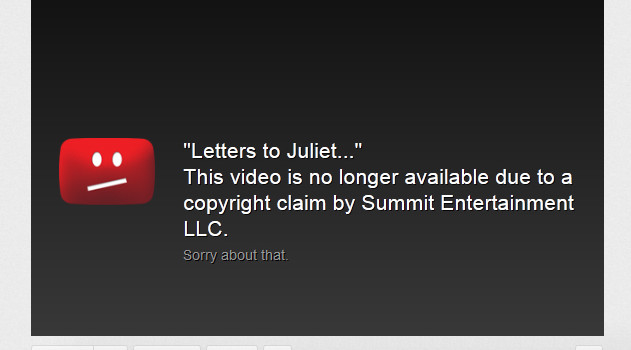The Trouble with the TPP series focuses today on the TPP’s effort to regulate how Internet providers and hosts address allegations of copyright infringement on their networks and sites (prior posts include Day 1: US Blocks Balancing Provisions, Day 2: Locking in Digital Locks, Day 3: Copyright Term Extension). The goals of the U.S. and Canadian government in the negotiations were clear from the outset: the U.S. wanted to export its DMCA notice-and-takedown system to the rest of the TPP, while Canada wanted to preserve its newly created notice-and-notice approach (more on the notice-and-notice system, which does a better job of striking a balance and preserving user privacy, here). In fact, Canada rushed through the notice-and-notice system without regulations (causing major problems of misleading notices) in order to argue that it should not be required to adopt the U.S. approach.
The end result is a compromise that allows Canada to maintain notice-and-notice, but no other TPP country can adopt it in order to comply with the ISP liability and notice rules. The Canadian rules can be found in Annex 18-E, which states that the standard TPP ISP rules do not apply to a country that meets the conditions of the annex “as from the date of agreement in principle of this Agreement.” Since that date is now long passed (October 4, 2015), no other TPP country can implement the notice-and-notice system to meet its TPP obligations. It should be noted that Chile, which objected to the special treatment for Canada, obtained a similar exception for its system based on the U.S. – Chile Free Trade Agreement in Annex 18-F.
That compromise highlights one of the major sources of trouble with the TPP. More than a mere trade agreement, the TPP is a clear effort by the U.S. to export its regulatory framework to other countries, creating a competitive advantage for its companies. Canada and Chile were able to push back to retain their system, but no other TPP country (present or future) will be permitted to adopt those systems to meet their treaty obligations. This compromise presumably comes at the behest of the major U.S. movie, music, and software industries, which have used their lead lobby group to criticize both Canada and Chile over their systems.
For those countries stuck with the TPP’s implementation of U.S. law, Annemarie Bridy points out that the TPP is “less speech-protective and more prone to over-enforcement and abuse.” For example, the TPP does not contain a mandatory counter-notice system that would allow users to effectively challenge claims of infringement by requiring providers to re-post their content. Moreover, the TPP has fewer requirements for the contents of takedown notices as compared to the DMCA, with no requirement for rights holders to state their good faith belief that the content in the notice infringes copyright. The absence of a good faith belief requirement is a major omission given that it has played a role in litigation in the U.S. where rights holders misuse the takedown system.
The decision lock-in the DMCA notice-and-takedown system within the TPP comes just as the U.S. Copyright Office undertakes a public study of its costs and burdens on rights holders, service providers, and the general public. As with the prior discussion on digital locks, the risk that the TPP may mandate a particular approach that limits domestic reforms is an enormous problem for all stakeholders, regardless of their perspective.
Perhaps the most telling provision in the Internet provider section comes at the very end. Article 18.82 (9), the final sentence in the section, states:
The Parties recognise the importance, in implementing their obligations under this Article, of taking into account the impacts on right holders and Internet Service Providers.
There is no reference to users or the general public in the provision, as the impact on the public simply doesn’t matter. This reflects an approach in which the broader public is not even an after-thought. It is missing altogether.








Thanks for your article and insights, Michael.
As you highlighted with the quote at the end, the TPP was written with only corporate and regulatory interests in mind. I also wanted to highlight this line of thought..
“That compromise highlights one of the major sources of trouble with the TPP. More than a mere trade agreement, the TPP is a clear effort by the U.S. to export its regulatory framework to other countries, creating a competitive advantage for its companies.”
The additional nuance, for me, of creating a competitive advantage is interesting and so I’ll chew on that further. In my eyes, the bold over arching of ‘setting’ regulation for member states is the bigger story. Such wide spread, soon to be forced, conformity of regulatory censorship puts a lot of power into the hands of the forces / people driving the TPPs ratification. The sought after erosion of state held sovereignty to establish regulations / regulatory processes now condemns member state into being told what is in their best interests; a very empire-esque act of condescension and legal subjugation.
I found your article through twitter and look forward to reading (and sharing) your other articles on the TPP. Thank you so much!
Pingback: The Trouble with the TPP, Day 5: Rights Holders “Shall” vs. Users “May”-IT大道
Pingback: FACE OFF: Two sides of the TPP - Trade Ready
Pingback: FACE OFF: Two sides of the TPP | Trade Ready
More proof on why this horrific trade deal should be stopped at all costs. Do you want to helplessly watch censorship laws become international, thanks to corporate neo-fascism? Do you want ISPs to be granted police power over websites, which has never been intended to be their purpose? Imagine a less accessible and open internet with this corrupt legislation in effect. Not to mention an increased jail population if things go worse.